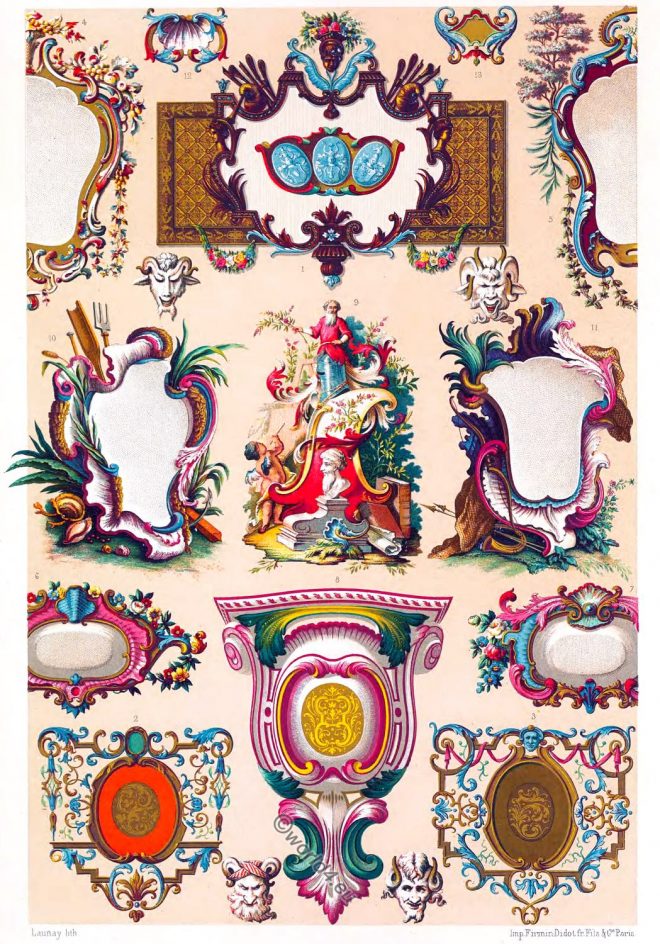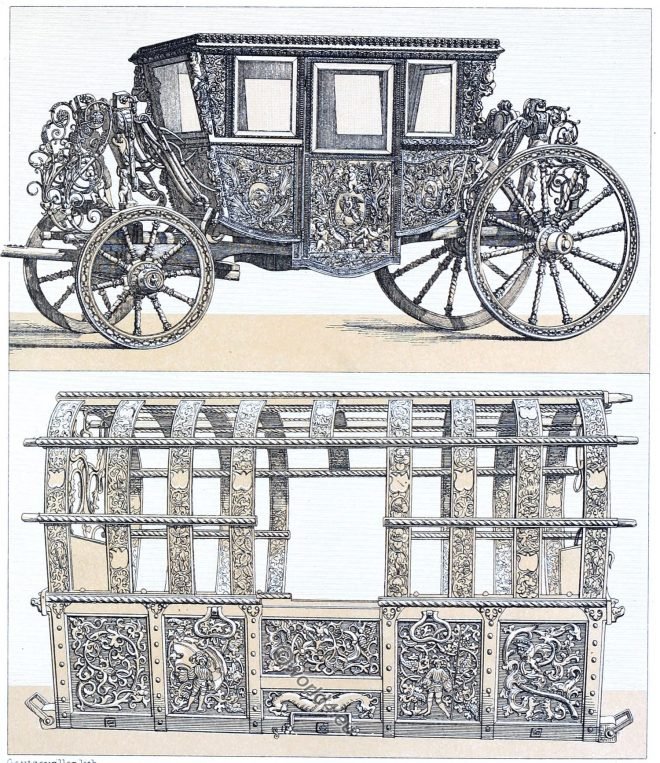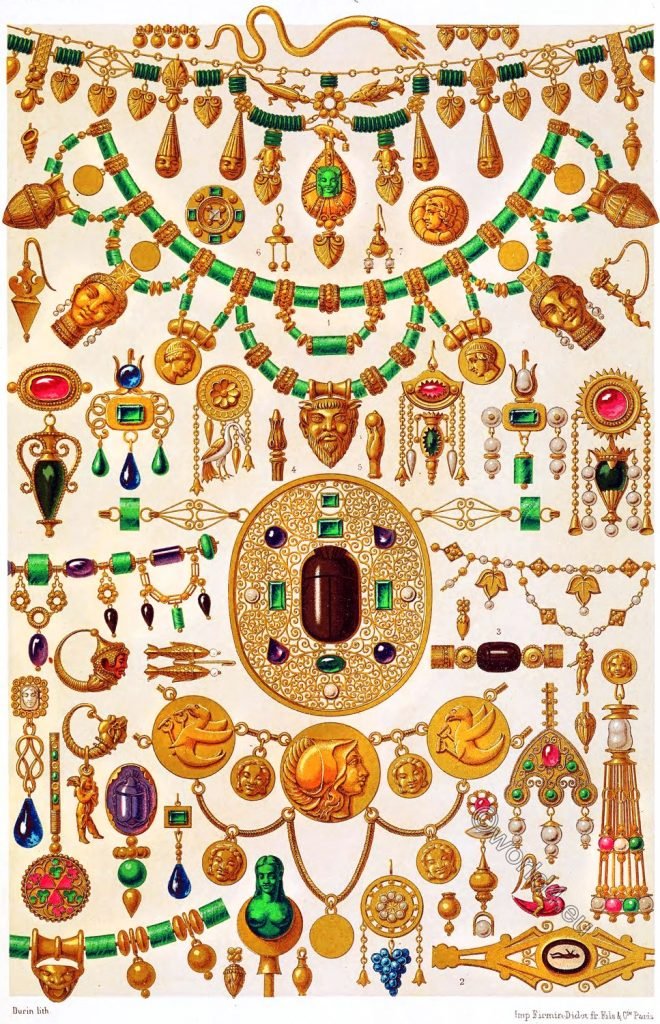Greek-Roman art. Mosaics, painted bas-reliefs and wall paintings found in Herculaneum and Pompeii. Ornaments from panels, friezes, borders and mural paintings.
Tag: Ornaments
Byzantine Art. Mural, paintings, mosaics, and paintings from manuscripts.
Marginal paintings. Paintings in St. Sophia. Mosaics from Palermo. Enameled border. Paintings at Constantinople.
Cartouches. Specimens. Peinture en camaïeu. France 18th century.
THIS plate terminates the series in which we have successively represented the different phases of the cartouche.
Design of a silk pattern in franco-oriental style. 17th c.
Design of a silk pattern in franco-oriental style based on Persian ornamentation. France at the beginning of the 17th century.
Transport wagons, coaches and carriages in 16th and 17th century.
Transport wagons, coaches and carriages in 16th and 17th century Europe. Coaches in France. Continental carriages in the 13th and 14th century.
Embroidered Fukusa. Japan ornamental arts.
Embroidered Fukusa. Japan ornamental arts, by George Ashdown Audsley, 1882.
Japan. Ornamental arts. Rich Fabrics for obi or girdle. 19th c.
The fabrics here illustrated show two styles of artistic treatment.
Glass painting in grisaille technique in the Middle Ages.
Glass painting of church windows with grisaille window roses. Painting on glass attained its highest excellence in the thirteenth century.
Greco-Roman Antiquities. Pompeian style. Decorative Architecture.
THE purely decorative architecture, which we find represented on the inner walls of the apartments in Herculaneum and Pompeii, seems to belong less to the domain of reality than to that of fancy.
Etruscan Art. Jewels. Polychromatic ornament by Auguste Racinet.
Civilization of ancient Italy. The Etruscans, also obsolete Etrurians, were an ancient people in Etruria who lived in the northern central Italy in the area of today’s regions Tuscany, Umbria and Lazio and called themselves Rasenna according to Dionysios of Halikarnassos.










